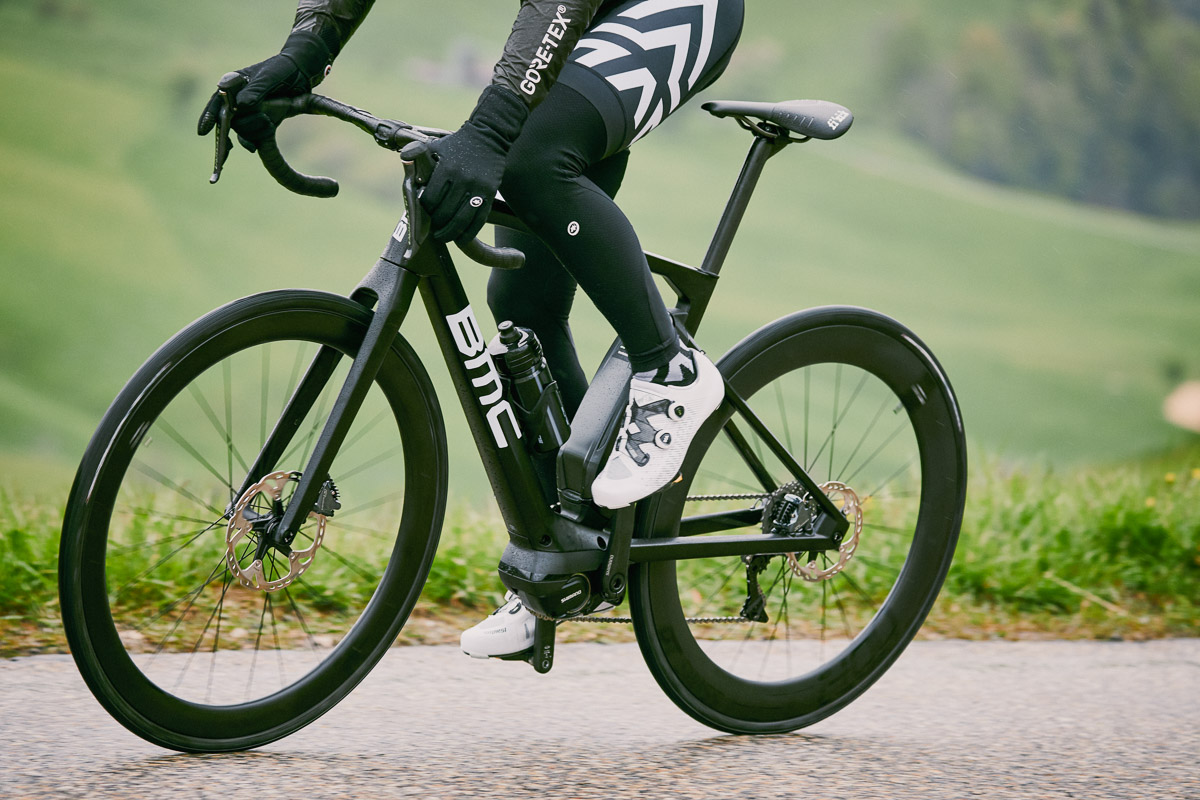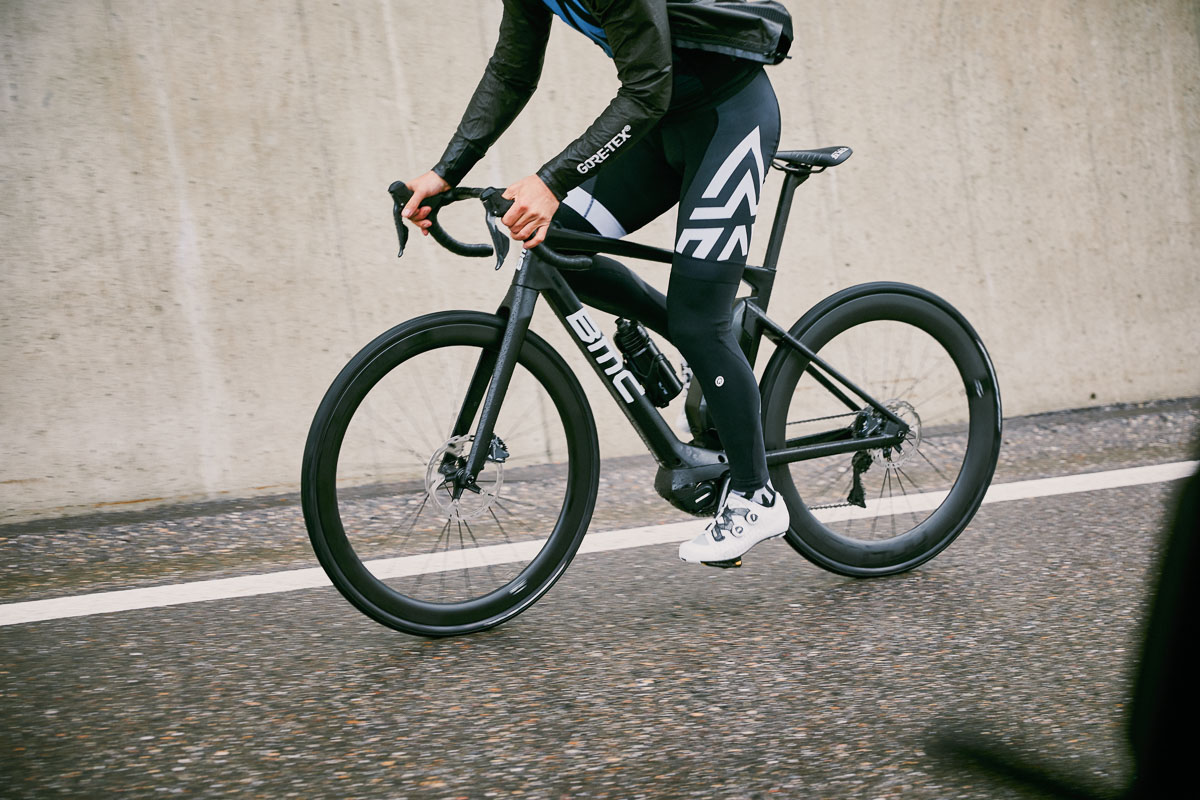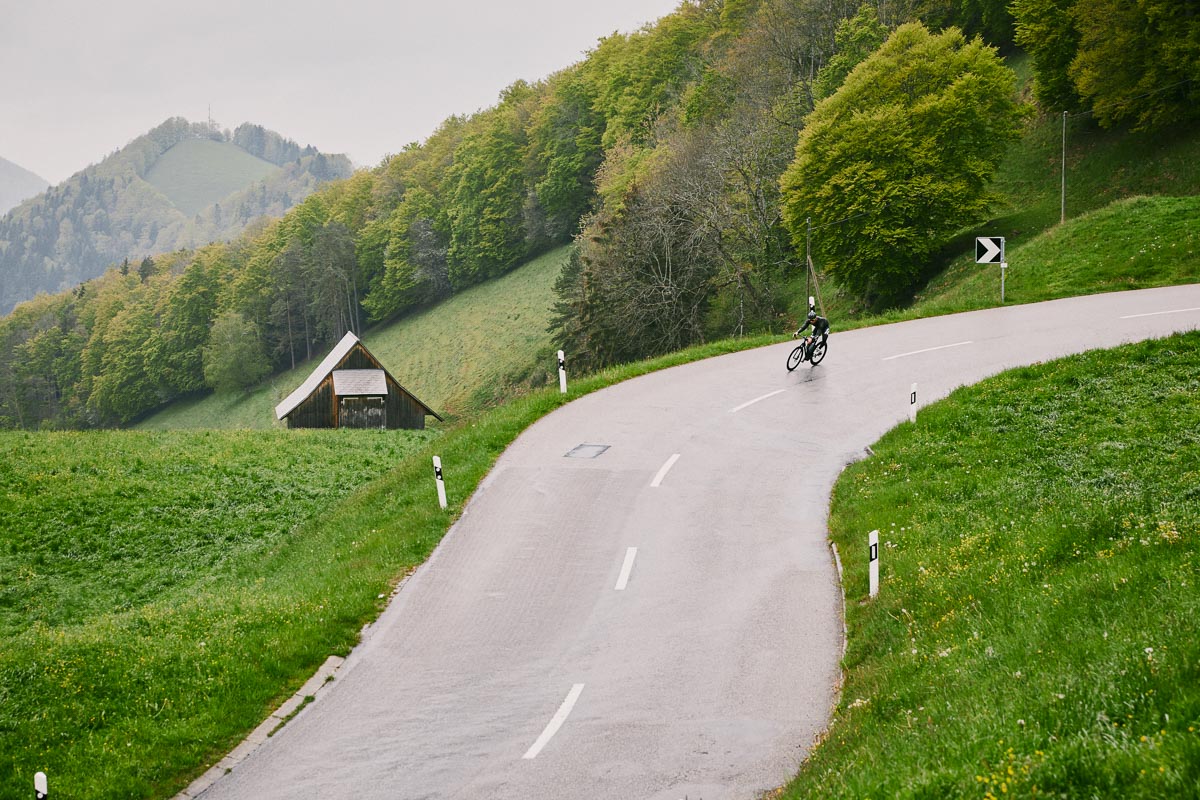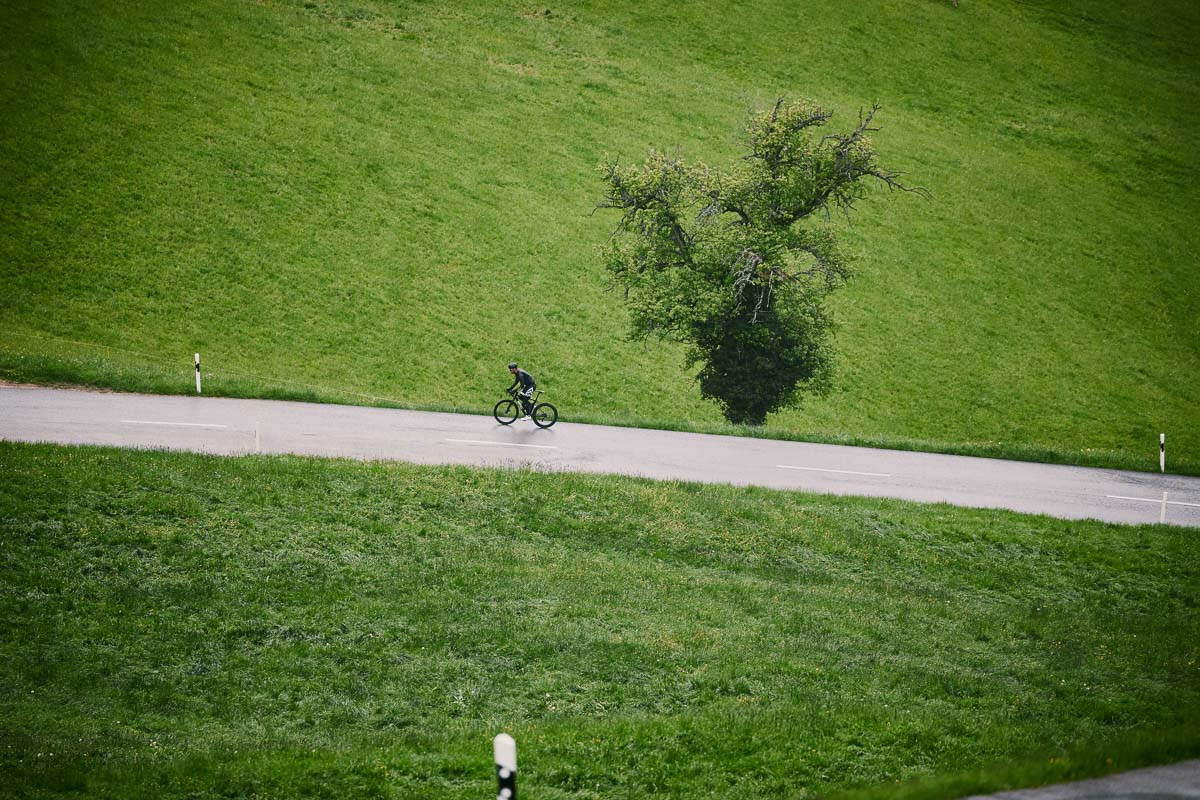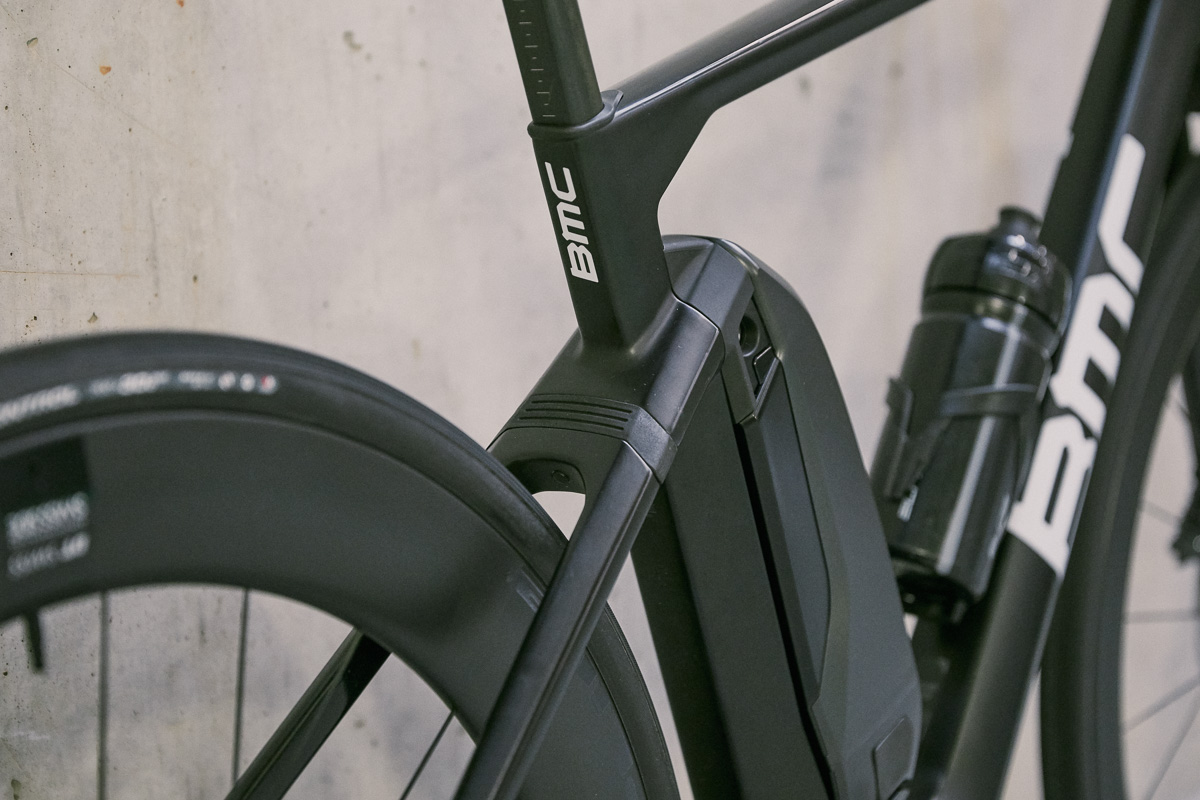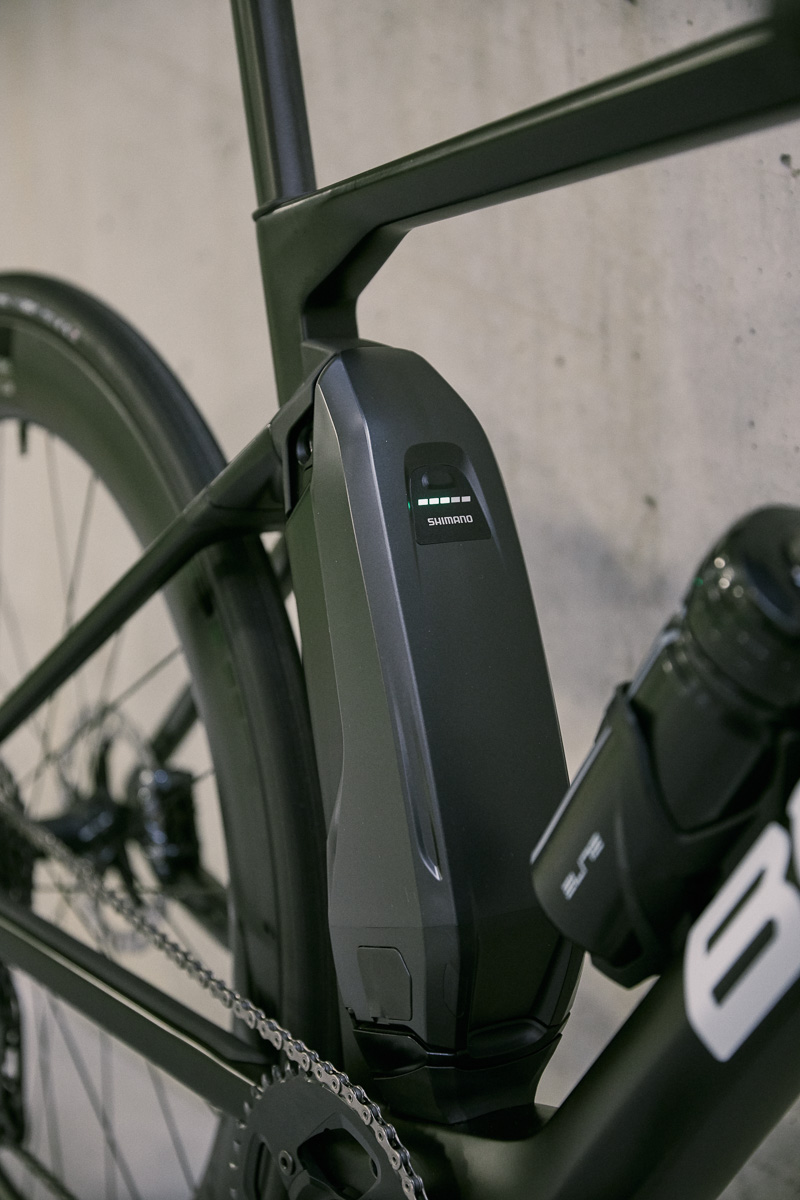BMC is officially in the e-road game, with the new Alpenchallenge AMP Road. Based on their existing Alpenchallenge AMP platform, it’s outfitted with a full road kit – with tire clearance for gravel adventures, too. You might have some questions – Does the MTB-focused Shimano STEPS system mate well with a road bike? Do e-road bikes ruin the purity of the sport? Can you feel all the extra weight of the battery and motor? We traveled to Solothurn, Switzerland to attend the launch of this bike, to find out for ourselves.
First Ride Review: BMC Alpenchallenge AMP Road e-bike
You might have seen our recent overview of the new Alpenchallenge AMP Road – but if not, check it out for the full tech and specs. In short, the bike uses the existing AMP frame platform with a road parts kit, for BMC’s first official entry into e-road.
I should preface this by saying that this was my first in-depth experience with any e-road bike, which is still a very new category. Like most people, I thought the idea was at least mildly silly at first glance… but I had so much fun riding it, that I can confidently say this category has a bright future. Let’s dig into the experience.
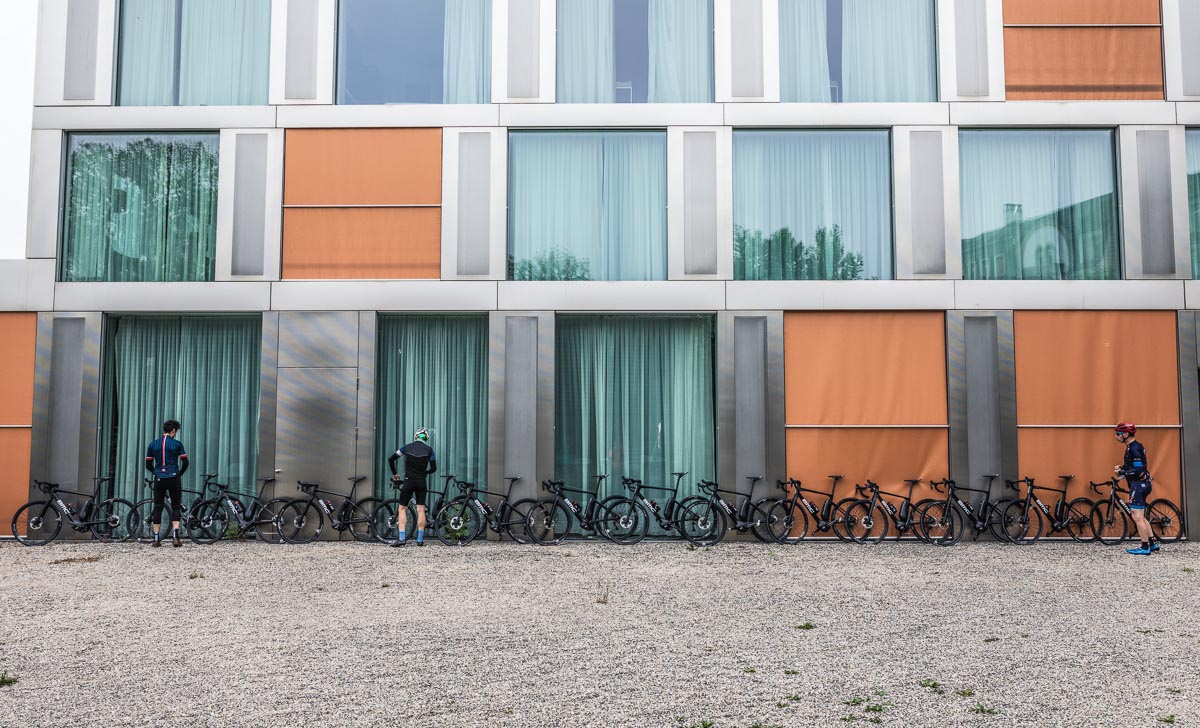
Our test bikes were the mid-spec ONE model ($6,999) with Ultegra Di2, DT Swiss HE 1800 Spline db 32 wheels, and round (non-aero) version of the ICS integrated bar and stem. Complete bike weight was not provided, but you immediately notice the extra heft when you pick it up. The top-end LTD spec comes in at just under 15kg (33lbs), with 6.2 pounds in the motor alone.
As mentioned in our tech overview, the sizing of the Alpenchallenge AMP Road is somewhat limited, with only three sizes available (S, M, L). I rode a Medium frame, which equates roughly to 56-58cm. At 6’1″, this is within my normal range, but I found the head tube too short. The ICS stem can’t flip over, but they do offer two angles to help satisfy different fit needs. We’re often short on extra time at launch events, so I rode the bike as-is, with the bars lower than I wanted. If I was buying the bike, I’d go for the lowest spec Road Two version, which uses a standard fork, stem, and headset spacers.

Out on the road, I got an immediate feel for how the Shimano STEPS system feels, playing with all three modes (Eco, Trail, and Boost). Eco mode roughly doubles your power output, with Trail, and Boost going up from there. If you’re familiar with other e-bike systems, you’ll note that this is a LOT of power – and a boon for commuters, cargo bikes, and tackling serious climbs.
The power disparity between different motor manufacturers is something that I hope will see further development, because they’re certainly not all created equal. Shimano’s Eco mode is about the same as the highest mode from at least one other e-system I’ve used. Some of this power output can be determined by software, but it’s also determined by the motor design itself. BMC is actually looking into the possibility of reducing the output of the motor (also increasing the range) – and I hope we can get to a point where e-systems are fully adjustable for the sake of group riding.
Motor tuning and software also determine things like the pedaling cadence that triggers the motor to deliver full power, the overall power curve, and how seamless it is when the system kicks off (i.e. when you stop pedaling, or get over the legal speed limit where the motor must stop providing assist). Seeing as this bike uses a motor designed for mountain bikes, I thought it might feel strange. While I only had one significant ride aboard the BMC, my concerns quickly disappeared.
In short, the STEPS system is remarkably smooth and intuitive. While other e-systems (like the Specialized Turbo system on the Vado and Como commuter bikes) target higher RPMs, the Shimano system gave me power right where I wanted it. If I’m pedaling away at 90rpm, I’m already riding efficiently in a proper gear – therefore, I don’t need the electric assist quite as much. If, however, I’m out of cassette cogs, stuck in the wrong gear, or need to make a hard effort at sub-optimal cadence – that’s when I need the help, and Shimano’s motor delivers in spades. In other words, the Shimano system feels like it helps build up your speed and momentum, whereas you have to get going before the Specialized system fully kicks in to help.
Our ride started on a foggy and misty day in Solothurn, and we headed up a long and winding road, through thick fog at about 800 meters. With the smooth and efficient power delivery of the motor, I found myself flying uphill (and smiling) – still putting in a hard effort, but covering much more distance. E-bikes don’t make your top speed higher, but just make your slowest speed faster, allowing you to churn through terrain that would otherwise be a gear-grinding sufferfest. As a former bike racer that now enjoys cross training into weights and martial arts (with about 30 lbs more body weight), I was able to level the playing field and keep up with faster riders. It’s serious fun that must be experienced for yourself to really understand.
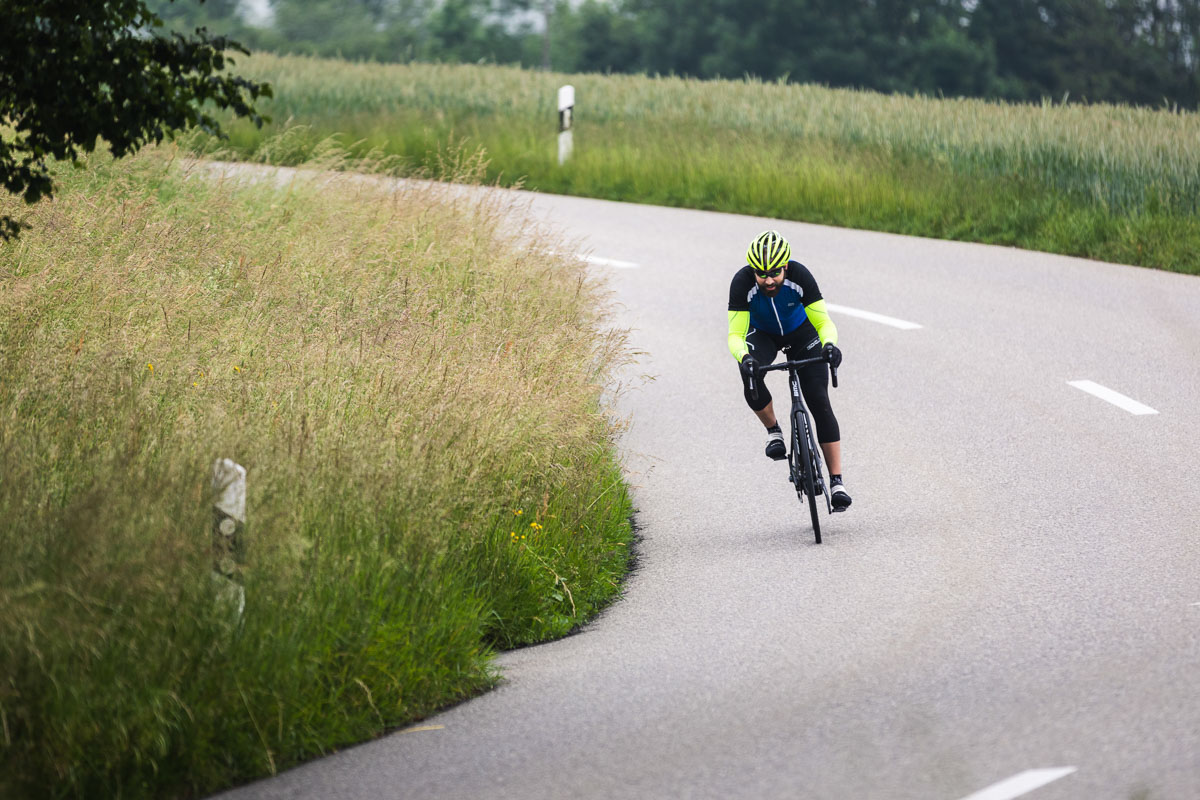
Class 1 European e-bikes are limited to 25kph of assist, so it kicks off once you hit that point. US-tuned versions of this bike are limited to 20mph (32kph). We had EU-tuned bikes, which can result in a noticeable cutoff in power when using the higher Trail and Boost modes. I imagine that American-tuned versions will feel a bit more natural, given the higher cutoff speed (since you’re more likely to retain assist through rolling hills and flat terrain).
The descending and overall handling of the AMP Road was quite impressive, and I agree with BMC’s decision to not adhere to UCI regulations (most notably, the wheelbase limitations). BMC put the heaviest parts of the bike as low as possible, and it felt very sure-footed headed downhill, aided by the wide 30mm tires. The DT wheels did feel somewhat heavy and dead, and owners of the lower-spec bikes might be served by a lighter wheel upgrade in the future. The take-home is that the handling feels like a (heavy) normal road bike, with no perceptible downsides or shenanigans.
Stiffness and ride quality seemed to be very well matched. With the bulky motor, there was no perceptible flex at the bottom bracket. While stiff frames can ride harshly, the Alpenchallenge AMP Road felt smooth, aided by the MTT (Micro Travel Technology) soft tail design with 10mm of travel. Since the front end is fully rigid, I’d probably add on a Redshift suspension stem for gravel riding.
Battery life will depend on several factors, such as rider weight, climb grade, and the drive mode that you choose. Shimano quotes 100km of battery in Eco mode, 75km in Trail mode, and 50km in Boost mode with the 504Wh battery, so this isn’t something that will last all day. I had about 25% battery left after a 90 minute ride, using a mix of all three modes – including a lot of Boost during extended climbs.
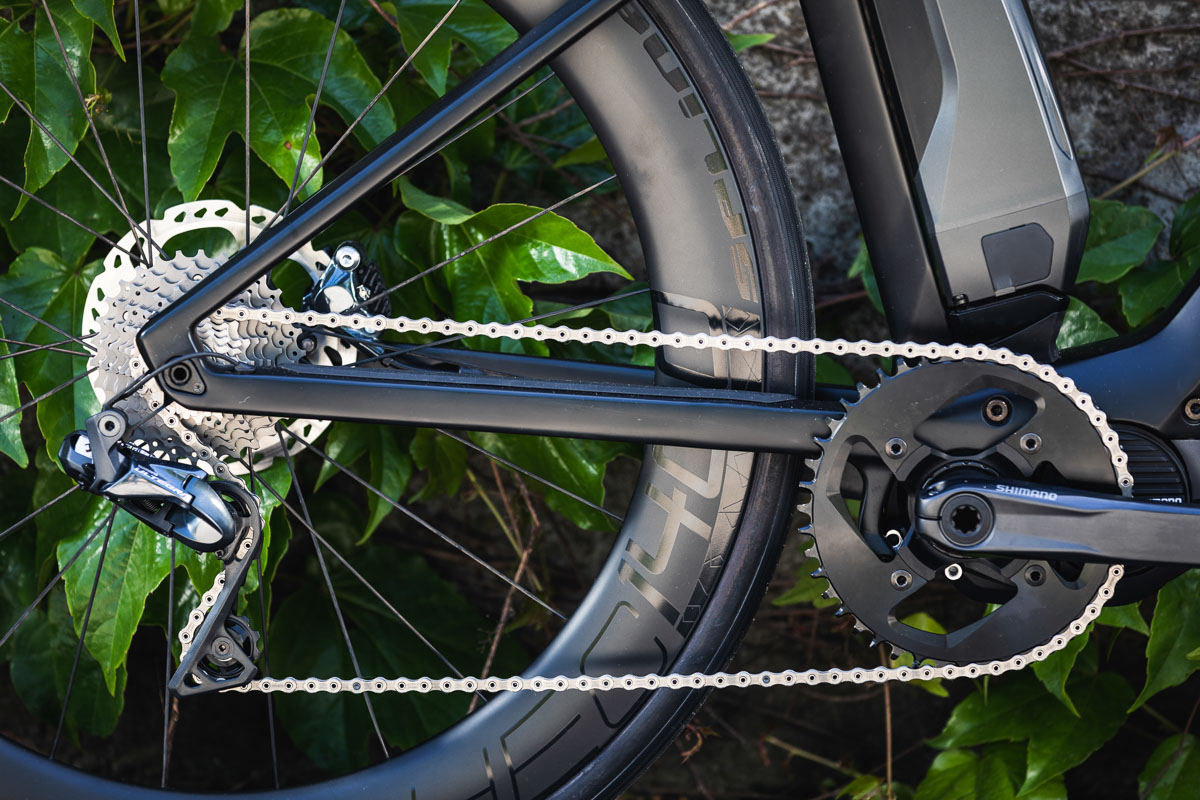
I do disagree with one significant part of the spec, and that’s gearing. E-road bikes use 1x drivetrains, since you don’t need as much gear range (due to the electric assistance). However, with a 44 x 11 top gear, we were greatly limited on the top-end – making it difficult to bridge gaps in the group. A 10-tooth cog or larger chainring would be more appropriate choice, along with an XT Di2 rear derailleur, with much larger capacity for gravel bike gearing (after all, this bike has clearance for 40mm tires).
Overall, the Alpenchallenge AMP Road is a fantastic and very fun bike, bringing a huge amount of horsepower to the e-road segment. Gearing limitations aside, it has great parts spec to complement its predictable handling and overall value. The only real problem you might have is dropping all your friends… at least until they decide to buy one.

